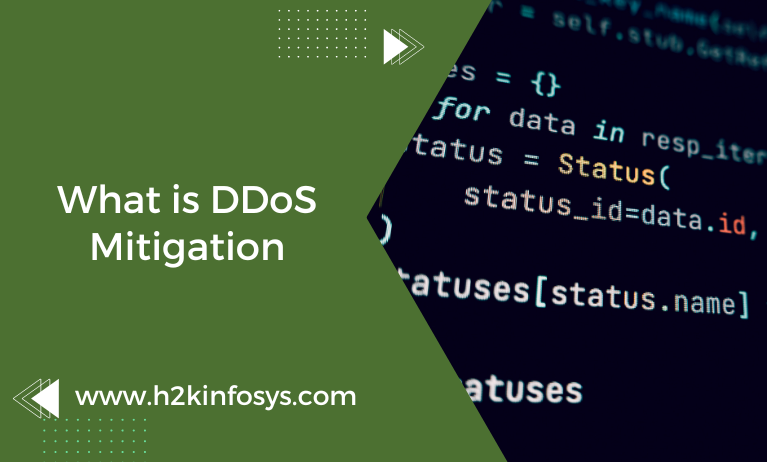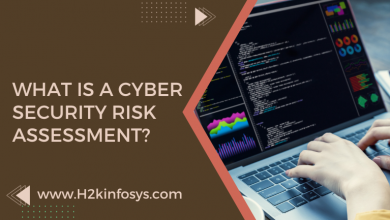What is DDoS Mitigation

A type of DDoS Mitigation attack known as distributed denial of service (DDoS) attempts to overload a target system with more data or traffic than it is capable of handling. A system’s capacity to deliver services may be reduced or rendered completely unavailable as a result of a successful assault. In order to keep the system functioning, DDoS mitigation solutions are made to recognize and filter attack traffic before it reaches the target.
DDoS: A Growing Threat
In recent years, DDoS attacks have become a greater danger. Due to the proliferation of large-scale botnets and the accessibility of automated DDoS software, anyone may now launch a DDoS attack. DDoS attacks are now a serious danger to all types of organisations. An organisation may have serious effects from these attacks, including as operational disruption, monetary losses, and reputational harm.
The DDoS Mitigation Stages
A DDoS mitigation solution seeks to minimise the potential impact on authorised users while identifying and filtering out attack traffic targeted at a target system. A four-stage procedure is frequently used by DDoS mitigation solutions, and it includes the following steps:
- Detection: Finding a DDoS attack is the first step in any DDoS mitigation endeavour. This involves being able to tell the difference between an actual attack and a lot of legitimate traffic, like a spike in site visitors on Black Friday.
- Hauling: DDoS attack traffic needs to be diverted to a site that can scrub the attack traffic since it is directed at a system that can’t manage it. BGP routing or modifications to DNS records are often used to achieve this in order to direct users to the DDoS mitigation solution.
- Filtering: The traffic is checked for malicious DDoS traffic after it has reached the DDoS mitigation provider. This entails identifying harmful traffic and stopping it while distinguishing between genuine traffic and malicious traffic based on the detection of bots and other strange activities, and also allowing the legitimate traffic to continue on to the intended destination.
- Adaptation: DDoS mitigation solutions must evolve to recognize and control the most recent threats since DDoS attacks are frequently a changing threat. In order to better recognize and filter DDoS attack traffic in the future, the solution should gather data on the attacker’s strategies while an assault is underway.
DDoS Mitigation Techniques
A DDoS assault can be mitigated by a company in a number of ways, each with differing infrastructure needs and effects on genuine traffic. Typical DDoS mitigation strategies include:
- Blackholing/Null Routing: When using blackholing or null routing, all traffic to a service is routed to a fictitious IP address. This results in the service dropping all traffic, both legal and malicious.
- Sinkholing: Sinkholing is a more focused variation of blackholing. It chooses which traffic to send to the blackhole from a list of known bad IP addresses rather than redirecting all of it. However, this technique is useless if the assault traffic’s source IP address is spoofed, which happens frequently in DDoS attacks.
- Scrubbing: Scrubbing is the process of looking at traffic to find and discard packets that are thought to be attack traffic based on numerous criteria (size, content, source, etc.). Although this is the most precise and effective method of DDoS mitigation, the additional processing it needs is the latency and resource requirements of DDoS mitigation.
DDoS Mitigation Services
A company can get the tools it needs to defend against DDoS attacks from a DDoS mitigation provider. This includes recognizing and removing DDoS traffic, sending the traffic to its intended location, and routing DDoS traffic to DDoS scrubbing centres.
Additionally, a DDoS mitigation solution must have some assurances. To guarantee that a business has the DDoS mitigation capabilities it needs when it needs them, the solution, for instance, should be scalable to address even large-scale DDoS attacks and should offer dependable, high-performance protection.
DDoS Attack Mitigation and Protection
DDoS attacks are a severe danger to businesses of all sizes and across all sectors. Cybercriminals are launching massive DDoS assaults on a wider spectrum of enterprises as they get cheaper and easier to carry out. These attacks may affect the company in a number of ways, including causing operational disruptions, financial losses, and reputational harm. Check out the Cybersecurity online training to find out how vulnerable you are to DDoS attacks.
Conclusion Implementing a DDoS mitigation solution that can block even the greatest attacks is the best method to deal with the DDoS issue. Learn more about how to find the best DDoS solution and what to look for in a DDoS mitigation service by visiting the Cybersecurity online courses.





